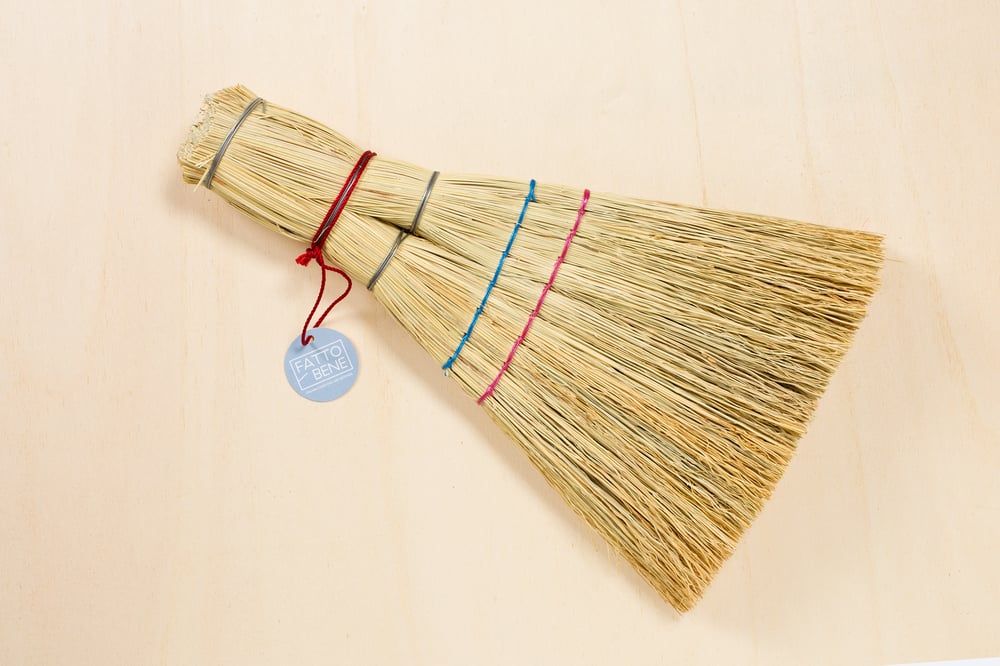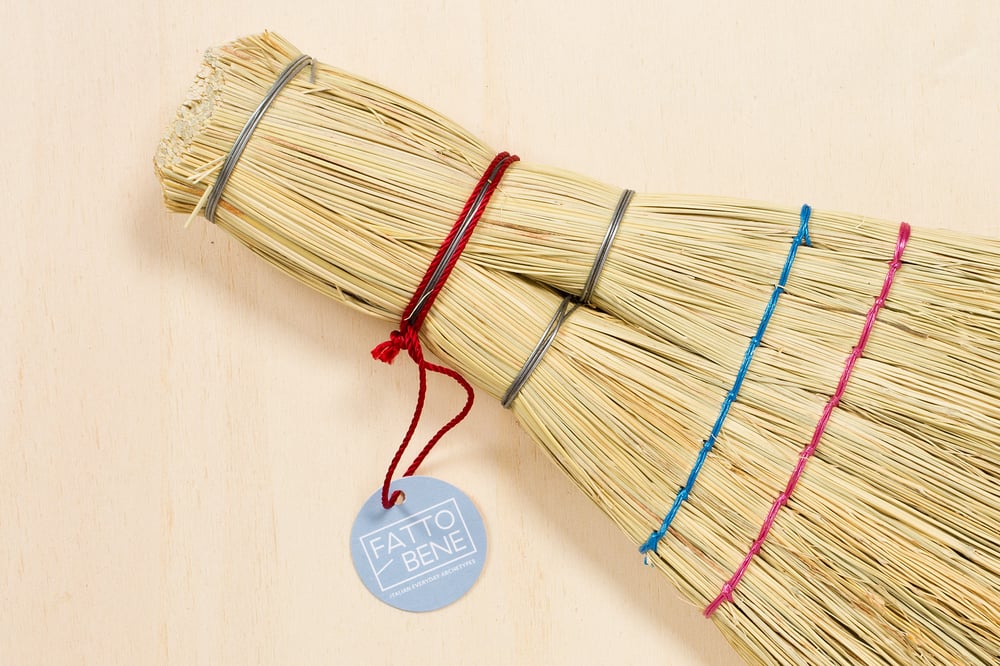Sold out
HANDMADE STRAW BROOM / SCOPA DI SAGGINA FATTA A MANO
FATTOBENE TRADITIONAL COLLECTION:
HANDMADE MILO STRAW BROOM, VENETO REGION
Ehi, are you a broom collector?
So, this is the right place for you!
This milo broom is handmade by one of Italy's last broom artisans.
During his long career he has been working in the design world and for cultural institutions like La Biennale di Venezia.
So every single broom is an expression of vernacular art. Architests and interior designers buy them to create beautiful wall installations, but you can also use them for your deep cleaning activity, since they are very flexible and durable.
As we report in our book:
"The Canavese countryside in Piedmont and the Rovigo region in Veneto were famous for the production of hand-made brooms until the ‘50s. In these areas the farmers used milo (Sorghum vulgare) as chicken feed. The rest of the plant, dried and cleaned, was used to make brooms.
Every year, at Summer’s end, the farmers were used to prepare the plants by eliminating impurities, and dividing them in 2-inch bundles before hanging them to dry.
Then, during the long days at home in the Winter, they used to craft brooms in their spare time.
The simplest brooms were made with just one bundle. The more complex ones could reach three.
The binding was done with green willow branches, which are very flexible and resistant, rather than rope, which frays easily".
COLLEZIONE FATTOBENE:
SCOPA DI SAGGINA FATTA A MANO, VENETO
Siete collezionisti di scope?
Allora questo è il posto giusto per voi!
Questa scopa di saggina è fatta a mano da uno degli ultimi artigiani italiani specializzati in produzione di scope.
Da questo laboratorio veneto sono nate collaborazioni importanti con il mondo del design e con istituzioni culturali come la Biennale di Venezia.
Ogni singola scopa è un'opera d'arte popolare. Architetti e interior designer le acquistano per creare installazioni murali di grande fascino, ma naturalmente possono essere usate per il caminetto o per le attività di pulizia, poiché sono molto flessibili e resistenti.
Dal nostro libro:
"Fino agli anni '50, le campagne del Canavese, in Piemonte, e del Polesine, in Veneto, erano famose per la produzione di scope. Qui, i contadini utilizzavano la saggina (Sorghum vulgare) come alimento per gli animali da cortile. Il resto della pianta, seccata e ripulita, era impiegata per la fabbricazione di scope.
Ogni anno, alla fine dell'estate, i contadini preparavano le piante da far seccare, ripulendole dalle impurità e suddividendole in mazzi da 5 cm di diametro.
Poi, dopo aver concluso tutte le attività nei campi, si dedicavano a questo passatempo domestico, fino alla primavera successiva.
Le scope più semplici erano composte da un solo corpo. Quelle più complesse, potevano raggiungere le tre unità.
Per la legatura, al posto della corda (facilmente deteriorabile), si utilizzavano rami di salice fresco, caratterizzato da grande elasticità e resistenza".

